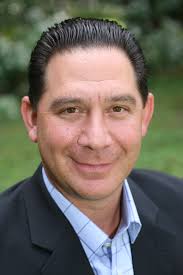
By: Randy Nathan (Coach Randy), MA, MSW
Harassment, intimidation and bullying (HIB) has literally surrounded our lives. You only have to look at the social media apps on your smartphone or turn on the news to see the amplified awareness of bullying behavior. However, there is a breeding ground for what is transpiring. It occurs under the pretext of teamwork, sportsmanship and pushing for excellence. Bullying is born in the locker rooms, the sidelines, the practice fields, and the stands. In the hallowed halls of youth sports, bullying is tolerated and taught, supported and sustained, modeled and manifested. The lip service paid to this national tragedy has allowed the problem to fester, virtually unchecked, for generations.
Astoundingly, we are kept in the dark about this hotbed of negative behavior in sports. There are moments of opportunity when something gets into the news, yet seldom few are willing to seriously address what is really occurring – a pattern, a culture that promotes harassment, intimidation and bullying. Whether it involves professional football players from Miami, a football coach from the University of Maryland, hazing of high school athletes in Arizona, or out of control parents in the stands, it is a source for the biggest and strongest to use their strength against the weakest.

The win-at-all-cost attitude promotes a negative culture as well as bullying behavior. Research now proves that negativity actually impedes performance. Players want to feel connected, find purpose, and be a part of a greater good. Coaches must take the lead in creating a positive climate, not only for players, but also parents. Coaches are informal educators and need to create a positive atmosphere for learning. Instead of focusing on winning, identify and reward effort. Therefore, when a player makes an error, instead of humiliating them by screaming, create a Mistake Ritual. Use your fingers to “flush” a toilet (flush it down) or wipe your hand across your shoulder to “wipe it off.” Remind players that the most important play is, the next play.
Most parents agree that sports teach valuable life lessons. Therefore, they must do their best to focus on the bigger picture. Don’t concentrate on the mistakes, playing time, and/or coach from the stands. Let the coach, coach. Then, following the game say to your player, “I love watching you play.” Regardless of the performance on the field, focusing on the negative does not benefit a healthy relationship. Truth be told, since 98.5% of youth athletes are not getting Division 1 scholarships, or playing professional sports, time ends quickly to enjoy watching them play. Ultimately, the player will only have their memories. I imagine a parent would rather have their child’s recollections of sports be positive about eating ice cream and friendship, instead of the negative and deadly car ride home. The parent might remember the score, but I guarantee the player will not.
Randy Nathan, MA, MSW (aka Coach Randy) is the President/CEO of Project NextGen a leadership, training and professional coaching organization. His book “Bullying in Sports: A Guide to the Injuries We Don’t See” is published by Pearson Education. He is the NJ State Olweus Representative, National Trainer for the Positive Coaching Alliance, and NY-area anti-bullying expert for Fox 5 News, Good Day New York, and CBS/NBC NY news. This the first of a four-part series focusing on Bullying In Sports (Part-two: Bully Coaches, Part-three: Bully Players, Part-four: Bully Parents). Coach Randy is presenting at the upcoming IBPA Conference being held in San Diego, CA. He can be reached for presentations and workshops at www.BullyingInSports.com. Or reach him directly at CoachRandy@CoachRandySays.com and Twitter @CoachRandySays.
